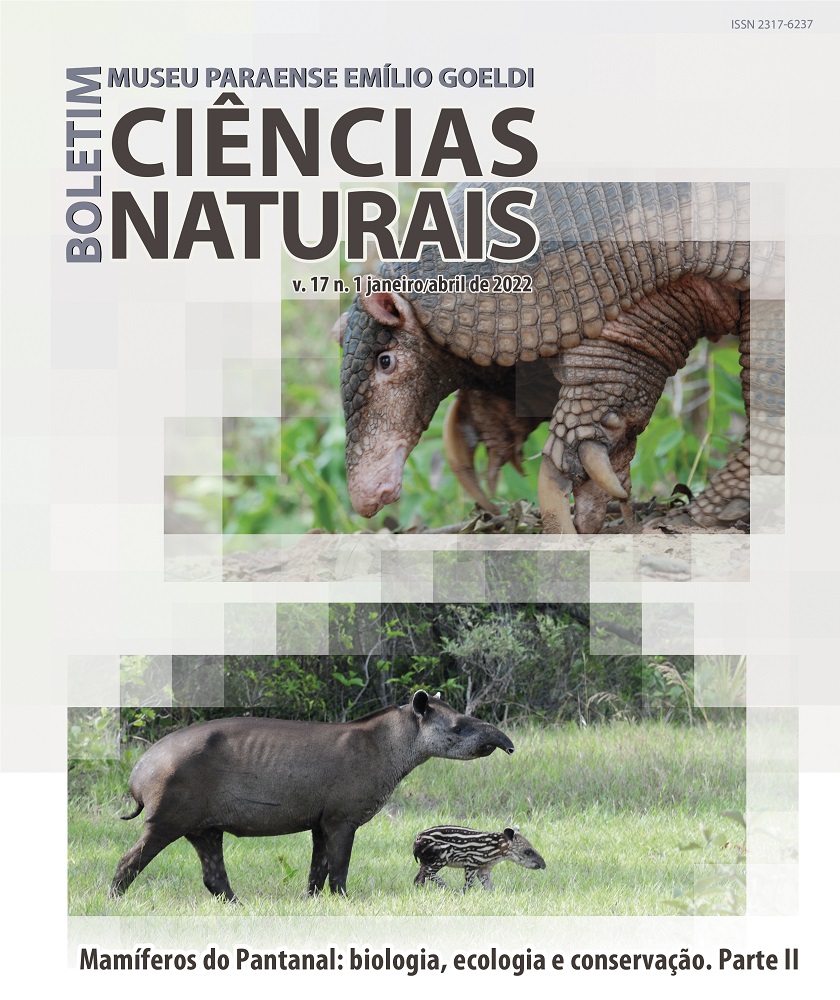The Perissodactyla order: current knowledge about the lowland tapir, with particular focus on the Pantanal biome
DOI:
https://doi.org/10.46357/bcnaturais.v17i1.832Keywords:
Literature review, Ecology, Conservation, Individual and population monitoring, Animal health, Tapirus terrestrisAbstract
In the Pantanal of Brazil, the Perissodactyla order is represented by a single species: the lowland tapir (Tapirus terrestris) — the largest land mammal in Brazil. This species is listed as ‘vulnerable to extinction’ both nationally and globally. At the regional level, in the Pantanal, the tapir is listed as a near threatened species, considering that there are still significant populations in the biome — an estimated total of 30,000 individuals (14,000 sexually mature) — distributed in densities varying between 0.21 and 1.38 ind./km² in different sub-regions of the biome. The aim of this article was to compile the current knowledge about the species , — with emphasis on studies carried out in the Pantanal, — encompassing biological, ecological and health aspects, as well as present information on study methods and chemical restraint of free-living tapirs and highlight certain conservational challenges. This article brings new information about the tapirs of this biome. The information provided here can guide new studies, decision-making processes, and actions aimed at the conservation of tapirs and the Pantanal biome.
Downloads
Published
Issue
Section
License
Publication means fully assigning and transferring all copyrights of the manuscript to the journal. The Liability Statement and
Assignment of Copyrights will be enclosed with the notice of acceptance. All the authors must sign the document and return it to the journal.






